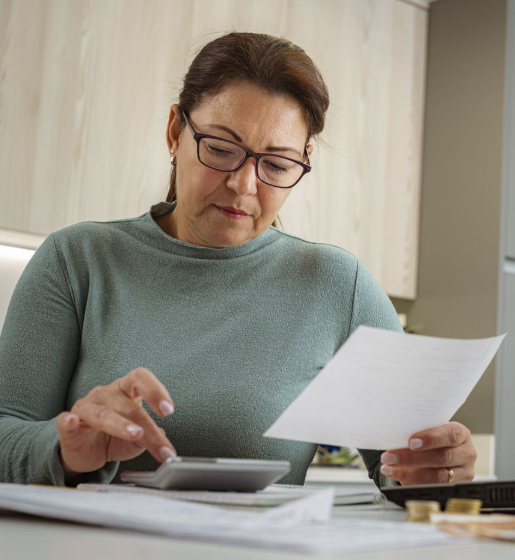Being self-employed in the UK offers great flexibility and independence, but it also comes with the responsibility of managing your own taxes. Whether you’re a freelancer, sole trader, or business owner, it’s essential to understand how your income is taxed and how to make the most of available deductions and reliefs. In this blog, we’ll explore the tax rates, common expenses you can deduct, and how to handle your tax obligations efficiently.
Understanding Self-Employment and Taxation
Self-employment means you work for yourself rather than being employed by someone else. This includes freelancers, sole traders, and those running their own businesses. If you earn income outside of traditional employment, HMRC considers you self-employed.
It’s crucial to distinguish between general income tax and self-employment tax. While income tax applies to all income, self-employment tax includes both income tax on your profits and National Insurance contributions (NICs). If you have a full-time job and also earn from a side hustle, HMRC will add your earnings together to determine which income tax band you fall into. However, if your side business pushes you into a higher tax bracket, your tax rate could increase.
Current Income Tax Rates for Self-Employed Individuals (2024/25)
For self-employed individuals in the UK, income tax is calculated based on your taxable profits. The rates are the same as those for employed individuals:
- Personal Allowance: Up to £12,570 (tax rate 0%)
- Basic Rate: £12,571 to £50,270 (tax rate 20%)
- Higher Rate: £50,271 to £125,140 (tax rate 40%)
- Additional Rate: Over £125,140 (tax rate 45%)
Understanding these tax brackets is essential for self-employed individuals to plan their finances and avoid surprises at tax time.
National Insurance Contributions (NICs)
In addition to income tax, self-employed individuals are required to pay National Insurance Contributions (NICs). For the 2024/25 tax year:
- Class 2 NICs: For self-employed individuals with profits over £6,725, this is a fixed weekly charge of £3.45. It’s voluntary for those earning below the Small Profits Threshold (£6,725) but can be paid voluntarily to maintain eligibility for benefits like the State Pension.
- Class 4 NICs: For those with profits above £12,570, Class 4 NICs are due. The rates are 9% on profits between £12,570 and £50,270, and 2% on profits above £50,270.
These contributions are crucial for accessing benefits like the State Pension, so understanding how they work is essential for long-term financial planning.
Other Taxes for the Self-Employed
In addition to income tax and NICs, self-employed individuals may be subject to the following taxes:
Value Added Tax (VAT)
If your business generates an annual turnover exceeding £90,000, you must register for VAT. The standard VAT rate is 20%, though certain industries may qualify for reduced rates. For businesses with a turnover under £150,000, the Flat Rate Scheme may be available, where you pay a fixed percentage of your gross turnover to HMRC.
Dividend Tax
If you run your business through a limited company and pay yourself through dividends, you’ll be subject to dividend tax. For 2024/25, the tax-free dividend allowance is £500, with additional amounts taxed at:
- 8.75% for basic rate taxpayers
- 33.75% for higher rate taxpayers
- 39.35% for additional rate taxpayers
Corporation Tax
If you operate as a limited company, you’ll also need to pay corporation tax on your profits. The corporation tax rate for the 2024/25 tax year ranges from 19% to 25%, depending on your profits.
Business Rates
If you operate from a separate commercial property, you may need to pay business rates, similar to council tax. However, if you work from home, you typically won’t need to pay business rates unless a part of your home is used exclusively for business purposes.
Allowable Expenses for Sole Traders
As a self-employed individual, you can deduct a wide range of business-related expenses from your income to reduce your taxable profits. These expenses must be “wholly and exclusively” for business purposes. Common allowable expenses include:
- Office costs: Stationery, phone bills, internet fees
- Travel expenses: Business-related travel, including mileage, train fares, accommodation
- Equipment and software: Computers, subscriptions, and tools necessary for your work
- Professional fees: Accountant, solicitor, or other professional services
- Marketing and advertising: Website, online ads, and promotional materials
- Premises costs: Rent, utilities, and insurance for business premises
- Clothing: Specialized work clothing
- Home office expenses: A portion of household bills if you work from home
- Pension and Gift Aid: Contributions to pensions or charitable donations
Self-Employment Income Examples
Here are a couple of examples of how taxes apply to self-employed income:
- Freelance Consultant
You earn £60,000 in consultancy fees. Your business expenses, including travel and software, amount to £15,000. Your taxable profit would be £60,000 – £15,000 = £45,000. This profit will be subject to income tax and NICs based on the current tax bands. - Independent Software Developer
You generate £80,000 from software development. After deducting £20,000 for business-related expenses, your taxable profit is £60,000. This is the amount subject to income tax and NICs.
Tax Rebates for the Self-Employed
A tax rebate occurs when you’ve overpaid taxes. This can happen for several reasons, such as incorrect tax codes or overpayments made through Self Assessment. If you’ve made contributions to a pension scheme or donated to charity through Gift Aid, you may also be entitled to a tax rebate, particularly if you’re a higher-rate taxpayer.
You can check for potential rebates by logging into your HMRC online account or by reviewing your Self Assessment return.
How to Register as Self-Employed
Registering as self-employed is simple and can be done online. First, create a Government Gateway account, then register for Self Assessment. After registration, you’ll receive a Unique Taxpayer Reference (UTR), which is essential for filing your tax return. Remember, you must register by 5 October in your second tax year to avoid penalties.
Conclusion
Managing tax as a self-employed individual can be complex, but understanding your obligations is the first step toward efficient tax planning. By utilizing allowable expenses, paying attention to your National Insurance contributions, and making use of available reliefs, you can reduce your tax liability and keep your business running smoothly. Make sure to stay updated with any changes in tax laws, and consider seeking professional advice to optimize your tax strategy.



